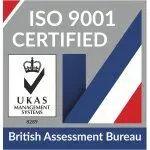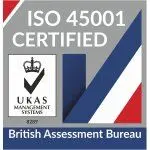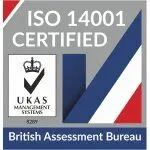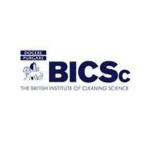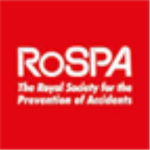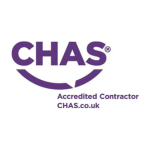
Top 5 Tips for Keeping Schools Clean and Hygienic
Overview
Importance of cleanliness in schools
Cleanliness in schools is of utmost importance as it plays a crucial role in maintaining a healthy and hygienic environment for students. A clean school not only prevents the spread of diseases but also promotes better concentration and productivity among students. It creates a positive atmosphere that fosters learning and growth. Moreover, cleanliness in schools instills good habits in students from a young age, teaching them the importance of personal hygiene and cleanliness in their daily lives. By prioritizing cleanliness, schools can ensure the overall well-being and safety of their students, creating a conducive environment for learning and development.
Benefits of maintaining hygiene in schools
Maintaining hygiene in schools has numerous benefits. Firstly, it helps prevent the spread of germs and diseases among students, teachers, and staff. By keeping the school environment clean, the risk of infections and illnesses is significantly reduced. Secondly, a clean and hygienic school promotes better learning and academic performance. Research has shown that students in clean and well-maintained schools have higher attendance rates and are more engaged in their studies. Additionally, maintaining hygiene in schools creates a positive and healthy atmosphere for students to thrive in. It instills good habits and teaches them the importance of cleanliness and personal hygiene. Overall, the benefits of maintaining hygiene in schools extend beyond just health and cleanliness, but also contribute to the overall well-being and success of students.
Challenges in keeping schools clean
Schools face several challenges in keeping their premises clean and hygienic. One of the main challenges is the high volume of students and staff members present on a daily basis, which can lead to a significant amount of dirt and debris being brought into the school. Additionally, maintaining cleanliness becomes more difficult in areas such as classrooms, cafeterias, and restrooms, where there is frequent use and potential for spills or accidents. Another challenge is the limited resources and budget allocated for cleaning and maintenance, which may result in inadequate cleaning supplies or insufficient staffing. Furthermore, schools must also adhere to strict health and safety regulations, which adds an extra layer of complexity to the cleaning process. Despite these challenges, schools recognize the importance of maintaining a clean and hygienic environment for the well-being and overall health of their students and staff.
Implementing Regular Cleaning Practices
Developing a cleaning schedule
Developing a cleaning schedule is essential for maintaining a clean and hygienic school environment. By establishing a regular cleaning routine, schools can ensure that all areas, from classrooms to common areas, are thoroughly cleaned and disinfected. This not only helps to prevent the spread of germs and illnesses but also creates a welcoming and safe space for students, teachers, and staff. A well-planned cleaning schedule should include tasks such as dusting, vacuuming, mopping, and sanitizing surfaces. It is important to allocate specific time slots for each task and assign responsibilities to designated staff members. Additionally, the schedule should be flexible enough to accommodate special events or unexpected cleaning needs. By prioritizing cleanliness and adhering to a well-structured cleaning schedule, schools can promote a healthy learning environment for everyone involved.
Providing necessary cleaning supplies
To ensure a clean and hygienic environment in schools, it is essential to provide necessary cleaning supplies. These supplies include disinfectants, cleaning sprays, hand sanitizers, paper towels, and trash bags. By equipping schools with these supplies, we can promote regular cleaning practices and maintain high standards of cleanliness. Additionally, it is important to educate students and staff on the proper use of these supplies to maximize their effectiveness. Providing necessary cleaning supplies is a crucial step in creating a healthy and safe learning environment for everyone.
Training staff on proper cleaning techniques
Training staff on proper cleaning techniques is essential for maintaining a clean and hygienic school environment. By providing comprehensive training, school staff can learn the correct procedures for cleaning different areas, using appropriate cleaning products, and following safety protocols. This training ensures that staff members are equipped with the knowledge and skills necessary to effectively clean and disinfect classrooms, restrooms, common areas, and other high-touch surfaces. Additionally, training staff on proper cleaning techniques promotes consistency in cleaning practices, reducing the risk of cross-contamination and the spread of germs. It also instills a sense of responsibility and pride in maintaining a clean and healthy learning environment for students and staff alike. Overall, investing in training staff on proper cleaning techniques is crucial for ensuring a safe and hygienic school environment.
Promoting Hand Hygiene
Installing hand sanitizing stations
Installing hand sanitizing stations is an essential step in maintaining cleanliness and hygiene in schools. These stations provide a convenient and accessible way for students and staff to sanitize their hands regularly, reducing the spread of germs and preventing illnesses. By strategically placing hand sanitizing stations throughout the school premises, such as near entrances, classrooms, and common areas, schools can promote good hygiene practices and create a healthier environment for everyone. Additionally, proper installation and maintenance of these stations ensure that they are always stocked with hand sanitizers, encouraging regular use and reinforcing the importance of hand hygiene. Overall, installing hand sanitizing stations is a crucial measure in keeping schools clean and hygienic.
Teaching proper handwashing techniques
Teaching proper handwashing techniques is crucial in maintaining a clean and hygienic school environment. By educating students on the correct way to wash their hands, we can reduce the spread of germs and prevent illnesses. It is important to emphasize the importance of using soap, rubbing hands together for at least 20 seconds, and thoroughly rinsing off the soap. Additionally, teaching students to dry their hands properly using clean towels or hand dryers is essential. By instilling these proper handwashing techniques, we can create a healthier and safer learning environment for everyone.
Encouraging students to use hand sanitizers
Encouraging students to use hand sanitizers is an important step in maintaining cleanliness and hygiene in schools. By promoting the use of hand sanitizers, schools can help prevent the spread of germs and reduce the risk of illness among students. It is essential to educate students about the importance of hand hygiene and the proper way to use hand sanitizers. Providing easy access to hand sanitizers throughout the school premises and encouraging regular use can instill good hygiene habits in students. Additionally, schools can organize awareness campaigns and interactive sessions to emphasize the significance of hand sanitization. By actively promoting the use of hand sanitizers, schools can create a healthy and hygienic environment for students, ensuring their overall well-being.
Maintaining Clean Restrooms
Regular cleaning and disinfection
Regular cleaning and disinfection are essential for maintaining a clean and hygienic environment in schools. By regularly cleaning surfaces, such as desks, chairs, and door handles, potential germs and bacteria can be eliminated, reducing the risk of illness among students and staff. Additionally, disinfecting common areas, such as classrooms, bathrooms, and hallways, helps to prevent the spread of contagious diseases. It is important for schools to establish a routine cleaning schedule and ensure that proper cleaning products and techniques are used to effectively remove dirt, dust, and harmful pathogens. By prioritizing regular cleaning and disinfection, schools can create a safe and healthy learning environment for everyone.
Ensuring availability of handwashing facilities
One of the key aspects of maintaining cleanliness and hygiene in schools is ensuring the availability of handwashing facilities. Handwashing is a simple yet effective way to prevent the spread of germs and diseases. By providing adequate handwashing facilities, such as sinks with running water, soap, and hand sanitizers, schools can promote good hygiene practices among students and staff. It is important to regularly check and maintain these facilities to ensure they are in proper working condition. Additionally, educational campaigns on the importance of handwashing should be conducted to raise awareness and encourage everyone in the school community to practice proper hand hygiene.
Implementing restroom etiquette education
Implementing restroom etiquette education is crucial in maintaining cleanliness and hygiene in schools. By teaching students proper bathroom habits, such as flushing after use, washing hands thoroughly, and disposing of waste properly, schools can create a healthier environment for everyone. Additionally, educating students about the importance of cleanliness and the potential health risks of poor hygiene practices can instill lifelong habits that will benefit them in the long run. Implementing restroom etiquette education not only promotes cleanliness but also fosters a sense of responsibility and respect among students, creating a positive and hygienic school environment.
Preventing the Spread of Germs
Encouraging students to cover their mouth and nose
One effective way to prevent the spread of germs and maintain a clean and hygienic school environment is by encouraging students to cover their mouth and nose. By teaching students the importance of covering their mouth and nose when coughing or sneezing, we can significantly reduce the transmission of respiratory illnesses. This simple practice can help prevent the spread of germs through respiratory droplets, which are one of the primary modes of transmission for diseases like the flu and COVID-19. Additionally, covering their mouth and nose can also help students develop good hygiene habits and promote a culture of cleanliness in the school. By instilling this habit in students from a young age, we are not only protecting their health but also creating a safer and healthier learning environment for everyone.
Promoting the use of tissues and handkerchiefs
Promoting the use of tissues and handkerchiefs is an essential step in maintaining cleanliness and hygiene in schools. By encouraging students and staff to use tissues and handkerchiefs, we can minimize the spread of germs and prevent illnesses. Tissues and handkerchiefs provide a convenient and hygienic way to cover the mouth and nose when coughing or sneezing, reducing the risk of spreading respiratory infections. Additionally, promoting the use of tissues and handkerchiefs instills good hygiene habits in students, teaching them the importance of personal cleanliness and responsibility. By making tissues and handkerchiefs readily available and educating students about their proper use, we can create a healthier and more hygienic school environment.
Implementing proper waste disposal practices
Implementing proper waste disposal practices is crucial for maintaining a clean and hygienic school environment. By ensuring that waste is disposed of correctly, schools can prevent the spread of diseases and minimize the risk of pests and odors. One effective way to implement proper waste disposal practices is to provide clearly labeled bins for different types of waste, such as recyclables, food waste, and general waste. Additionally, schools should educate students and staff on the importance of proper waste disposal and encourage them to follow the guidelines. Regular monitoring and maintenance of waste disposal areas are also essential to ensure that they are clean and functioning properly. By prioritizing proper waste disposal practices, schools can create a healthier and more pleasant learning environment for everyone.
Creating a Healthy Environment
Proper ventilation and air circulation
Proper ventilation and air circulation play a crucial role in maintaining a clean and hygienic school environment. By ensuring that fresh air constantly flows through the classrooms and common areas, the risk of airborne contaminants and germs is significantly reduced. Adequate ventilation helps to remove stale air, odors, and pollutants, creating a more pleasant and healthy learning environment for students and staff. It also helps to prevent the spread of infectious diseases by diluting and removing airborne pathogens. Implementing proper ventilation systems and regular maintenance checks can greatly contribute to the overall cleanliness and hygiene of schools.
Regular maintenance of school facilities
Regular maintenance of school facilities is crucial for ensuring a clean and hygienic environment. By regularly inspecting and repairing any damages or faults, schools can prevent the spread of germs and maintain a safe space for students and staff. This includes cleaning and disinfecting surfaces, maintaining proper ventilation, and ensuring the functionality of plumbing and electrical systems. Additionally, regular maintenance helps to prolong the lifespan of school facilities and reduce the need for costly repairs in the future. By prioritizing regular maintenance, schools can create a welcoming and healthy environment that promotes learning and well-being.
Implementing pest control measures
Implementing pest control measures is crucial for maintaining a clean and hygienic school environment. Pests such as rodents, insects, and birds can not only cause damage to the school property but also pose health risks to students and staff. To effectively control pests, schools should implement preventive measures such as regular inspections, sealing entry points, and proper waste management. Additionally, it is important to hire professional pest control services to identify and eliminate any existing pest infestations. By taking proactive steps to implement pest control measures, schools can create a safe and healthy learning environment for everyone.
Conclusion
The importance of maintaining cleanliness and hygiene in schools cannot be overstated.
Maintaining cleanliness and hygiene in schools is of utmost importance. It plays a crucial role in ensuring the well-being and health of students and staff. A clean and hygienic environment promotes better learning outcomes and reduces the risk of illnesses and infections. By keeping schools clean, we create a safe and comfortable space for students to thrive academically and socially. Additionally, maintaining cleanliness and hygiene instills good habits and teaches students the importance of personal hygiene and cleanliness in their daily lives. It is essential for schools to prioritize cleanliness and hygiene to create a conducive learning environment and promote the overall well-being of everyone involved.
By implementing these tips, schools can create a healthy and safe environment for students and staff.
Implementing these tips can greatly contribute to the creation of a healthy and safe environment for both students and staff in schools. By following these guidelines, schools can ensure that cleanliness and hygiene are prioritized, reducing the risk of illnesses and infections. Regular cleaning and disinfection of classrooms, common areas, and high-touch surfaces can help prevent the spread of germs. Encouraging proper hand hygiene practices, such as frequent handwashing with soap and water, can also play a crucial role in maintaining a hygienic environment. Additionally, promoting awareness about the importance of cleanliness and providing necessary resources, such as hand sanitizers and tissues, can further support the efforts to keep schools clean and hygienic. By implementing these tips, schools can create a conducive learning environment where students and staff can thrive without compromising their health and well-being.
Regular cleaning practices and promoting hand hygiene are essential in preventing the spread of germs and diseases.
Regular cleaning practices and promoting hand hygiene are crucial in maintaining a clean and hygienic environment in schools. By implementing regular cleaning routines, such as disinfecting surfaces and sanitizing common areas, schools can effectively reduce the spread of germs and diseases. Additionally, promoting hand hygiene through proper handwashing techniques and providing hand sanitizers throughout the school premises can further prevent the transmission of harmful bacteria and viruses. These practices not only protect the health and well-being of students and staff but also create a conducive learning environment where everyone can thrive.

